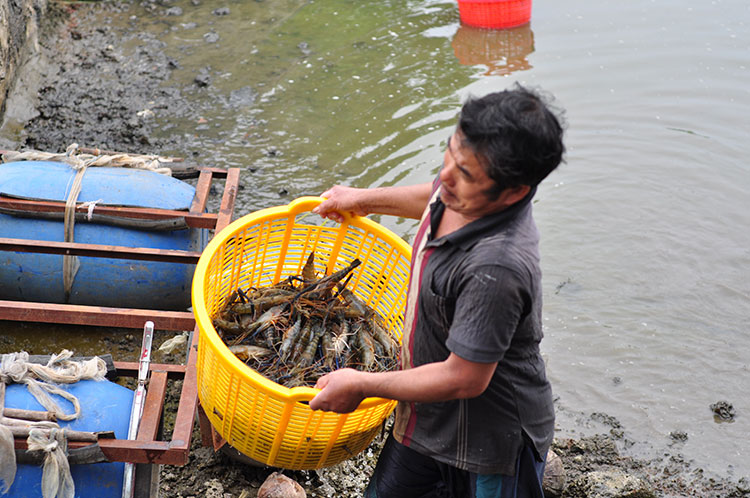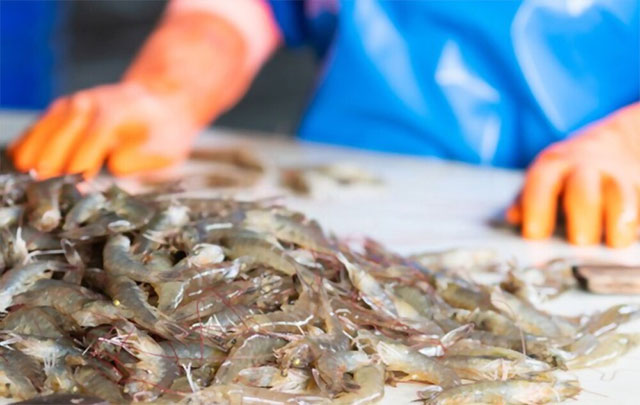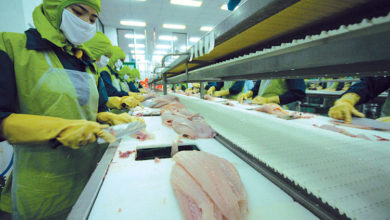Vietnam’s shrimp exports to the UK: FTA opportunities and competitive challenges
The UK is currently the sixth-largest individual market for shrimp imports from Vietnam, accounting for 5.5% of Vietnam’s total shrimp export value worldwide.
According to the Vietnam Association of Seafood Exporters and Producers (VASEP), in January 2025, Vietnam’s shrimp exports to the UK exceeded USD 16 million, marking an 8% increase compared to the same period last year. Notably, shrimp dominates Vietnam’s seafood exports to the UK, representing 70% of the total.

Vietnam’s key shrimp exports to the UK include peeled and deveined frozen whiteleg shrimp, frozen PD whiteleg shrimp, steamed and boiled frozen whiteleg shrimp, fresh and frozen whiteleg shrimp, and breaded whiteleg shrimp.
Despite fluctuations and instability in recent years, the UK remains a crucial market for Vietnamese shrimp due to the trade advantages within the bilateral relationship between the two countries. From 2018 to 2024, Vietnam’s shrimp exports to the UK peaked in 2020 at over $243 million before gradually declining to their lowest point in 2023. However, in 2024, exports showed signs of recovery, reaching over USD 212 million.
Vietnam’s shrimp exports to the UK in January 2025 continue to build on the strong growth momentum from 2024.
Currently, Vietnam is a member of two next-generation free trade agreements with the UK: the CPTPP and UKVFTA. The synergy between these agreements in both content and approach creates significant opportunities for businesses in both countries to enhance trade and investment, particularly in shrimp exports to the UK.
Shrimp accounts for approximately 10% of total seafood consumption in the UK. In the restaurant and food service sector, it is a staple ingredient, featured in around 61% of businesses nationwide. Notably, shrimp is especially popular in Indian and Chinese cuisine, commonly found in dishes such as spring rolls, soups, dumplings, and steamed buns.
Vietnam remains the UK’s leading shrimp supplier but faces intense price competition from India and Ecuador.
Thanks to free trade agreements, Vietnamese shrimp has a competitive edge over rivals from China, Thailand, Malaysia, Indonesia, the Philippines, India, and Brazil. However, to qualify for preferential tariffs, seafood products must meet strict requirements on origin, sustainability, and social responsibility.
British consumers prioritize high-quality, sustainably sourced, eco-friendly, and convenient products with clear origins. To expand their market share in the UK shrimp sector, Vietnamese businesses must ensure their products meet these expectations in quality, design, presentation, and taste. Additionally, they should invest in enhancing production capacity, quality management, and a deep understanding of market regulations.
In 2024, Soc Trang Seafood Joint Stock Company topped the list of the five leading Vietnamese shrimp exporters to the UK. With its exceptional production and export capabilities, the company has strengthened its position as the industry’s top player, outperforming numerous major competitors. Additionally, the other companies in the Top 5 also achieved strong results, including Thong Thuan Cam Ranh Seafood Joint Stock Company, Trang Joint Stock Company, C.P. Vietnam Livestock Joint Stock Company (Hue Factory Branch), and Tai Kim Anh Seafood Processing Joint Stock Company.
VFM






